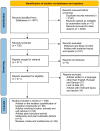Comparison between the Biological Active Compounds in Plants with Adaptogenic Properties (Rhaponticum carthamoides, Lepidium meyenii, Eleutherococcus senticosus and Panax ginseng)
- PMID: 35009068
- PMCID: PMC8747685
- DOI: 10.3390/plants11010064
Comparison between the Biological Active Compounds in Plants with Adaptogenic Properties (Rhaponticum carthamoides, Lepidium meyenii, Eleutherococcus senticosus and Panax ginseng)
Abstract
Background: In the 1960s, research into plant adaptogens began. Plants with adaptogenic properties have rich phytochemical compositions and have been used by humanity since ancient times. However, it is not still clear whether the adaptogenic properties are because of specific compounds or because of the whole plant extracts. The aim of this review is to compare the bioactive compounds in the different parts of these plants.
Methods: The search strategy was based on studies related to the isolation of bioactive compounds from Rhaponticum carthamoides, Lepidium meyenii, Eleutherococcus senticosus, and Panax ginseng. The Preferred Reporting Items for Systematic Reviews and Meta-Analyses (PRISMA) guidelines were followed.
Results: This review includes data from 259 articles. The phytochemicals isolated from Rhaponticum carthamoides, Lepidium meyenii, Eleutherococcus senticosus, and Panax ginseng were described and classified in several categories.
Conclusions: Plant species have always played an important role in drug discovery because their effectiveness is based on the hundreds of years of experience with folk medicine in different nations. In our view, there is great potential in the near future for some of the phytochemicals found in these plants species to become pharmaceutical agents.
Keywords: Eleutherococcus senticosus; Lepidium meyenii; Leuzea; Maca; Panax ginseng; Rhaponticum carthamoides; adaptogen; adaptogens; ecdysterone; plant adaptogens.
Conflict of interest statement
The authors declare no conflict of interest.
Figures
Similar articles
-
Extracts from Eleutherococcus senticosus (Rupr. et Maxim.) Maxim. Roots: A New Hope Against Honeybee Death Caused by Nosemosis.Molecules. 2020 Sep 28;25(19):4452. doi: 10.3390/molecules25194452. Molecules. 2020. PMID: 32998304 Free PMC article.
-
Evaluation of molecular chaperons Hsp72 and neuropeptide Y as characteristic markers of adaptogenic activity of plant extracts.Phytomedicine. 2013 Nov 15;20(14):1323-9. doi: 10.1016/j.phymed.2013.07.001. Epub 2013 Aug 6. Phytomedicine. 2013. PMID: 23920279
-
Novel molecular mechanisms for the adaptogenic effects of herbal extracts on isolated brain cells using systems biology.Phytomedicine. 2018 Nov 15;50:257-284. doi: 10.1016/j.phymed.2018.09.204. Epub 2018 Sep 20. Phytomedicine. 2018. PMID: 30466987
-
Eleutherococcus senticosus (Rupr. & Maxim.) Maxim. (Araliaceae) as an adaptogen: a closer look.J Ethnopharmacol. 2000 Oct;72(3):345-93. doi: 10.1016/s0378-8741(00)00181-1. J Ethnopharmacol. 2000. PMID: 10996277 Review.
-
A literature review of the studies concerning selected plant-derived adaptogens and their general function in body with a focus on animal studies.Phytomedicine. 2022 Oct;105:154354. doi: 10.1016/j.phymed.2022.154354. Epub 2022 Jul 21. Phytomedicine. 2022. PMID: 35932607 Review.
Cited by
-
Adaptogens on Depression-Related Outcomes: A Systematic Integrative Review and Rationale of Synergism with Physical Activity.Int J Environ Res Public Health. 2023 Mar 28;20(7):5298. doi: 10.3390/ijerph20075298. Int J Environ Res Public Health. 2023. PMID: 37047914 Free PMC article.
-
Effect of Sucrose Concentration on Rhaponticum carthamoides (Willd.) Iljin Transformed Root Biomass, Caffeoylquinic Acid Derivative, and Flavonoid Production.Int J Mol Sci. 2022 Nov 10;23(22):13848. doi: 10.3390/ijms232213848. Int J Mol Sci. 2022. PMID: 36430325 Free PMC article.
-
Effect of the Composition of Leuzea and Cranberry Meal Extracts on Metabolic Processes in Norm and Pathology.Pharmaceuticals (Basel). 2023 May 19;16(5):768. doi: 10.3390/ph16050768. Pharmaceuticals (Basel). 2023. PMID: 37242551 Free PMC article.
-
Maral Root Extract and Its Main Constituent 20-Hydroxyecdysone Enhance Stress Resilience in Caenorhabditis elegans.Int J Mol Sci. 2025 Apr 15;26(8):3739. doi: 10.3390/ijms26083739. Int J Mol Sci. 2025. PMID: 40332350 Free PMC article.
-
A Comprehensive Review on Deep Eutectic Solvents: Their Current Status and Potential for Extracting Active Compounds from Adaptogenic Plants.Molecules. 2024 Oct 9;29(19):4767. doi: 10.3390/molecules29194767. Molecules. 2024. PMID: 39407698 Free PMC article. Review.
References
-
- Panossian A.G., Efferth T., Shikov A.N., Pozharitskaya O.N., Kuchta K., Mukherjee P.K., Banerjee S., Heinrich M., Wu W., Guo D.A., et al. Evolution of the Adaptogenic Concept from Traditional Use to Medical Systems: Pharmacology of Stress- and Aging-Related Diseases. Med. Res. Rev. 2021;41:630–703. doi: 10.1002/med.21743. - DOI - PMC - PubMed
-
- Panossian A.G. Adaptogens: Tonic Herbs for Fatigue and Stress. Altern. Complement. Ther. 2003;9:327–331. doi: 10.1089/107628003322658610. - DOI
Publication types
LinkOut - more resources
Full Text Sources






